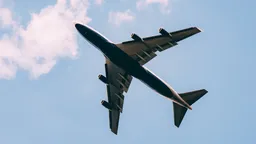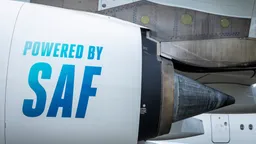[mailchimp_signup][/mailchimp_signup]In a key vote this afternoon, the committee said aviation should have its emissions “capped” at around 45% above 1990 levels, when it is integrated into the EU Emissions Trading Scheme in 2010. Although MEPs improved on the original legal proposal from the European Commission, the vote represents a step back from an earlier resolution by the European Parliament in July 2006 that said the sector should cut emissions in line with Kyoto Protocol targets. The decision also comes in contrast to an earlier EU commitment to cut overall greenhouse gas emissions by 20-30% by 2020.
João Vieira of Transport & Environment said: “While it’s somewhat reassuring that MEPs have strengthened the Commission’s proposal, they haven’t gone far enough in tackling rising emissions from the sector. A year ago MEPs were talking big on tackling aviation emissions, but today they have taken a step back from that commitment. It seems that it’s one rule for the most polluting form of transport on the planet, and another for everyone else.”
Airlines might profit from the scheme following the committee’s decision to give 50% of emissions permits away for free, rather than auction them all to the highest bidder.
Delia Villagrasa of WWF said: “Paying for all pollution permits means that the aviation sector adheres to the polluter pays principle and airlines actually have the most incentives to improve their performance. Other measures for tackling aviation emissions, such as a fuel tax and the end of VAT exemptions, are also needed”.
Richard Dyer of Friends of the Earth said: “The growth in aviation emissions must be curbed if the EU is to prevent dangerous climate change. Recent research by influential climate change academics found that a strong aviation ETS could help drive aviation technology innovation and provide the necessary price signals to curb growth. But now MEPs have backtracked from supporting all of the improvements necessary to achieve this.”
In a positive development, environmental groups acknowledged the committee’s partial recognition of the climate impact of aviation beyond CO2 emissions. The committee said that until other measures are in place to deal with the impact of Nitrogen Oxide (NOx) emissions, the sector should be subject to a two-times ’emissions multiplier’. But the full climate impact of aviation is between two and five times that of CO2 alone, depending in particular on the impact of the contrails that aircraft leave in their wake.
The Environment Committee was voting on a report on a legal proposal published by the European Commission in December 2006. The full parliament will now vote on the proposal in mid-November. But before the proposal becomes law, agreement must be reached between the European Parliament and member state environment ministers. They will discuss the proposal at their December meeting in Brussels.
-ends-
Notes to editors
1. Aviation and Climate Change
– Carbon Dioxide (CO2) emissions from EU international aviation increased by 90% between 1990 and 2005, and are the fastest growing source in the EU. (Source: EEA, Annual European Community greenhouse gas inventory 1990–2005 and inventory report 2007, Submission to the UNFCCC Secretariat, European Environment Agency, Copenhagen, June 2007)
– The most comprehensive assessment of the impact of aviation emissions was carried out by Sausen et al. in 2005 in “Aviation Radiative Forcing in 2000”. One of the main results of the report concerns the contribution of aviation to climate change – from direct emissions of carbon dioxide, water vapour, sulphate or soot particles, as well as indirect effects of nitrogen oxides emissions on the concentration of ozone and methane and the impact on the formation of clouds (contrails and cirrus clouds). This data has been confirmed by the latest IPCC Report and implies a Radiative Forcing Index for aviation of 2.7 (i.e. that aviation emissions have a climate change impact 2.7 times higher than CO2 emissions from land-based sources, all else equal), within a range of 2 to 5. The European Commission’s December 2006 proposal to integrate the sector into the EU-ETS states that, by the end of 2008 and after an impact assessment, the Commission will put forward a proposal to address the NOx emissions from aviation, but at present there is no mention of a multiplier. Environmental NGOs believe that until robust additional instruments are actually introduced which address the full climatic impact of aviation, a multiplier should be used.
– Every segment of the aviation industry including manufacturers, airlines and airports is subsidised and enjoys major tax exemptions (notably the lack of VAT on international tickets and taxes on kerosene). The exemption from taxation on aviation fuel is worth EUR 35bn per annum if airlines paid the average duty applied to motor fuel in the EU. (Source: “Clearing the Air: the myth and reality of aviation and climate change” T&E and CAN-Europe, 2006)
2. Comparison of the European Parliament environment committee vote – 2 October 2007
with the European Commission proposal – December 2006
– The environment committee supported the inclusion of all flights in the EU ETS in 2010; the Commission proposed the inclusion of Intra-EU flights in 2011 and all flights in 2012.
– The environment committee proposed the emissions cap to be defined as 75% of the baseline (2004-2006). This cap represents an increase in emissions of around 45% compared to 1990 levels.
– MEPs also proposed that only 50% of emissions permits should be auctioned. However, auctions represent the implementation of the polluter pays principle and are a superior method to distribute the permits, the only one that avoids market disruptions and does not penalise new entrants or the faster-growing aviation markets.
– The proposal of the Commission ignored the non-CO2 impacts of aviation. The Environment Committee voted in favour of a multiplier to address NOx emissions on a provisory basis, until the Commission adopts legislation to specifically address these emissions.
– The Impact Assessment for the European Commission and a report from the Tyndall Centre for Climate Change clearly show that the original European Commission Proposal is unlikely to reverse the current upward trend in emissions from aviation, and further measures are going to be needed. (Sources: European Commission: “Proposal for a directive of the European Parliament and of the Council amending Directive 2003/87/EC so as to include aviation activities in the scheme for greenhouse gas emission allowance trading within the Community, Com (2006) 818 Final”; Tyndall Centre for Climate Change Research at the University of Manchester: “Aviation in a low carbon EU: How the Emissions Trading Proposal must be improved” – report for Friends of the Earth.)


